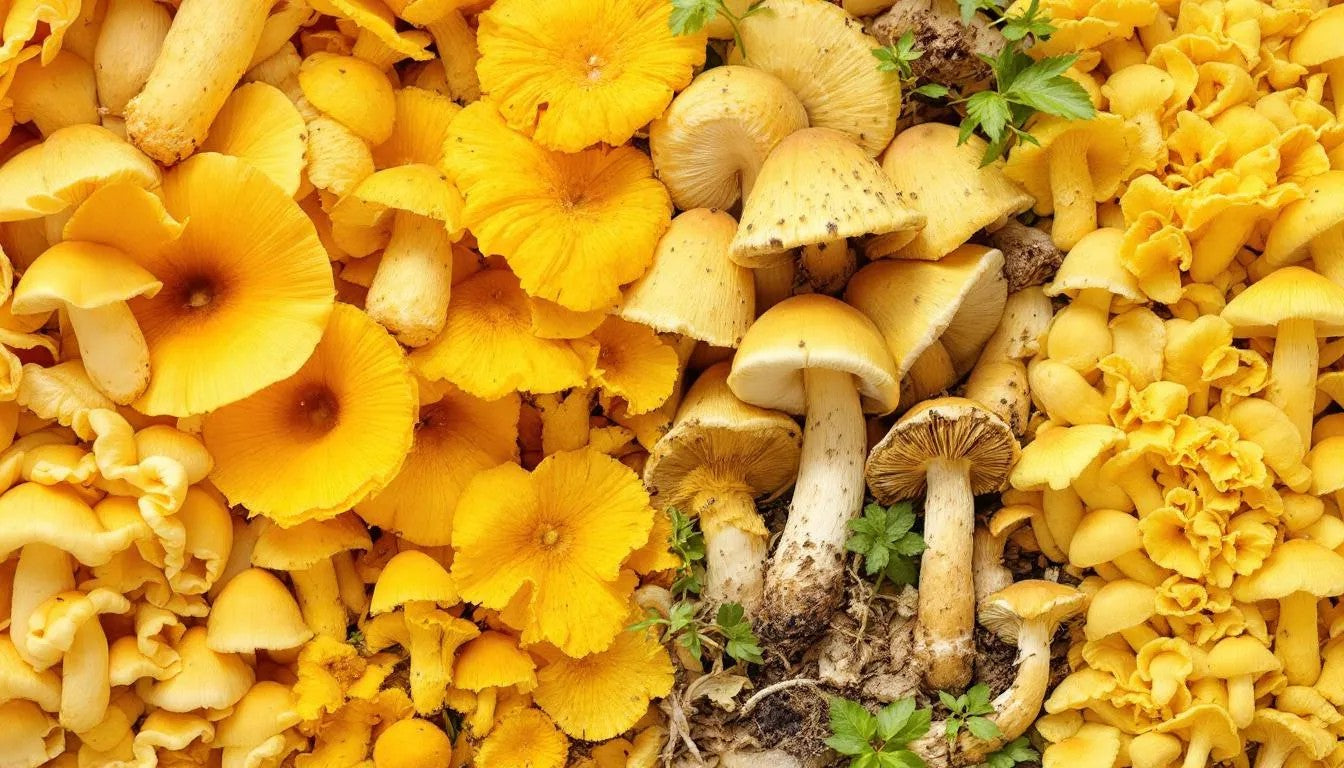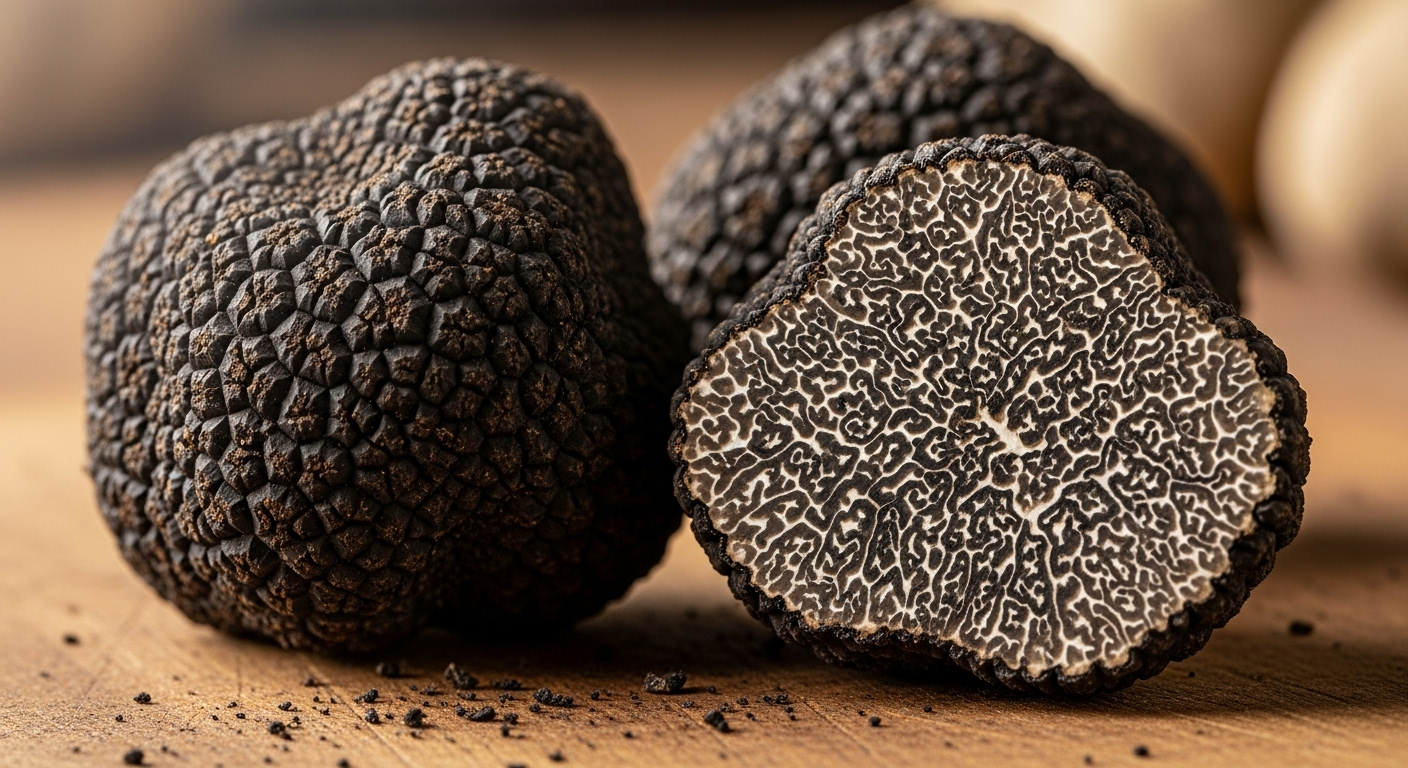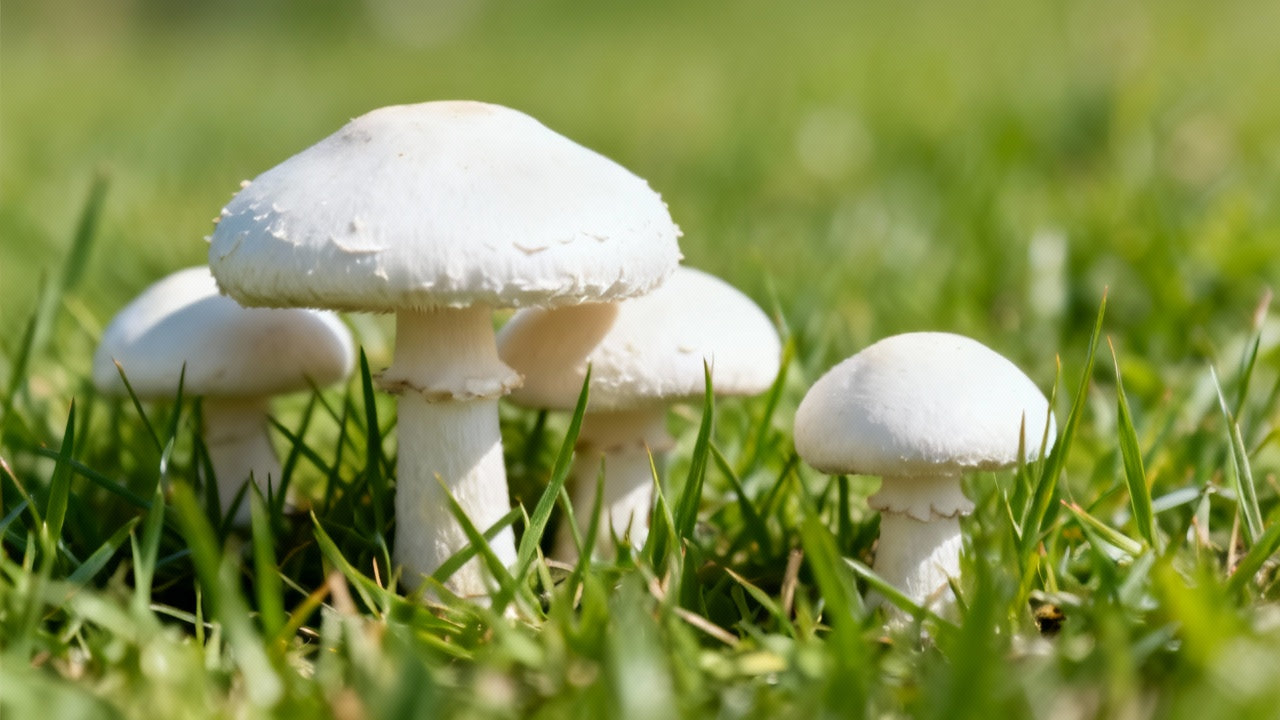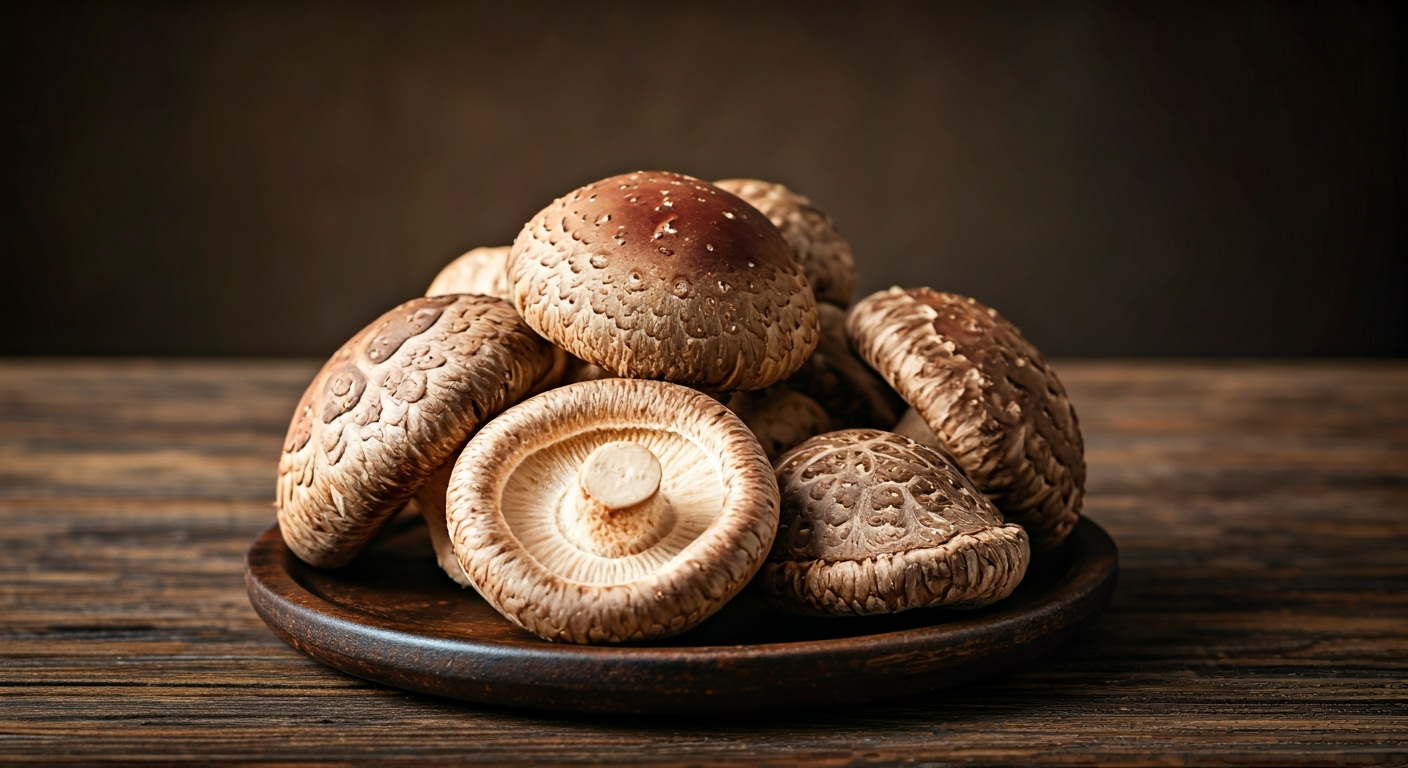Introduction
Few dishes capture the essence of comfort and flavor quite like a well-prepared Shiitake mushroom soup. With its rich umami taste, velvety texture, and nurturing qualities, this soup has earned its place among beloved culinary classics across many cultures. Shiitake mushrooms, known for their meaty texture and distinctive flavor, transform ordinary soups into extraordinary culinary experiences that satisfy both the palate and the body's nutritional needs.
In this comprehensive guide, we'll explore everything you need to know about Shiitake mushroom soup—from its impressive nutritional profile and health benefits to various preparation methods and creative recipe variations. Whether you're a seasoned chef or a curious home cook, this article will provide you with the knowledge and inspiration to create perfect Shiitake mushroom soup that will impress family and friends while supporting your health and wellness goals.
Join us as we dive into the fascinating world of Shiitake mushroom soup, uncovering centuries-old cooking traditions, modern culinary innovations, and the science behind what makes this humble soup so incredibly nourishing and delicious.
Understanding Shiitake Mushrooms
What Are Shiitake Mushrooms?
Shiitake mushrooms (Lentinula edodes) are among the most popular edible mushrooms in the world. Originally cultivated in East Asia, particularly Japan and China, these distinctive fungi have been prized for over 2,000 years. Their name comes from the Japanese words "shii" (referring to the tree where they commonly grow) and "take" (meaning mushroom).
Shiitake mushrooms are characterized by:
- Medium to large brown caps (typically 2-4 inches in diameter)
- Cream-colored gills underneath the caps
- Firm, meaty stems
- Rich, earthy flavor with hints of garlic and wood
- Distinctive umami taste profile
Available in both fresh and dried forms, Shiitake mushrooms have transcended their Asian origins to become a global culinary staple, appearing in kitchens and restaurants worldwide for their exceptional taste and versatility.

Nutritional Profile
Shiitake mushrooms offer an impressive nutritional profile that makes them an excellent addition to soups and other dishes:
Macronutrients (per 100g fresh Shiitake):
- Calories: Approximately 34
- Protein: 2.2g
- Carbohydrates: 6.8g
- Fiber: 2.5g
- Fat: 0.5g (primarily healthy unsaturated fats)
Micronutrients:
- B Vitamins: Rich in B2, B3, B5, and B6
- Minerals: Contains copper, selenium, manganese, zinc, and phosphorus
- Vitamin D: One of the few plant sources of vitamin D (especially when exposed to sunlight)
Bioactive Compounds:
- Beta-glucans: Complex polysaccharides with immune-supporting properties
- Eritadenine: A compound that may support healthy cholesterol levels
- Lentinan: A polysaccharide studied for its potential immune benefits
- Various antioxidants: Including phenolic compounds and ergothioneine
This nutritional density makes Shiitake mushroom soup not just delicious but also a nourishing addition to a health-conscious diet.
Health Benefits of Shiitake Mushroom Soup
Immune System Support
One of the most celebrated aspects of Shiitake mushrooms is their potential immune-supporting properties, which translate beautifully into soup form:
-
Beta-glucans: These complex sugars may help enhance immune function and response. When Shiitake mushrooms are simmered in soup, these compounds are released into the broth.
-
Lentinan: This polysaccharide has been studied extensively in Japan for its potential to support healthy immune function. Hot water extraction (as occurs during soup-making) is an effective way to access this compound.
-
Micronutrient contribution: The selenium, zinc, and vitamin D content in Shiitakes all play roles in supporting proper immune system function.
Research published in the Journal of the American College of Nutrition found that regular consumption of Shiitake mushrooms supported several markers of immune function in study participants.
Cardiovascular Benefits
Shiitake mushroom soup may support heart health through several mechanisms:
-
Eritadenine: This compound may help maintain healthy cholesterol levels already within the normal range.
-
Beta-glucans: Similar to those found in oats, these fibers may contribute to heart health.
-
Low sodium (in homemade versions): Unlike many commercial soups, homemade Shiitake mushroom soup can be prepared with controlled sodium levels, making it heart-friendly.
-
Potassium content: This mineral helps balance sodium levels in the body, supporting healthy blood pressure.
A study in the Journal of Nutrition found that compounds in Shiitake mushrooms supported healthy circulation and vascular function in laboratory models.
Gut Health Support
The digestive benefits of Shiitake mushroom soup include:
-
Prebiotic fibers: Shiitake mushrooms contain fibers that may serve as food for beneficial gut bacteria.
-
Digestive comfort: The warm, easy-to-digest nature of soup makes it gentle on the digestive system.
-
Polysaccharides: These complex carbohydrates may support a healthy gut microbiome.
Research in the International Journal of Medicinal Mushrooms suggests that compounds in Shiitake mushrooms may help maintain gut barrier function and support a balanced gut environment.

Classic Shiitake Mushroom Soup Recipes
Traditional Japanese Clear Shiitake Soup
This light, brothy soup highlights the pure flavor of Shiitake mushrooms:
Ingredients:
- 1 oz (28g) dried Shiitake mushrooms
- 6 cups dashi stock (or vegetable stock)
- 2 tablespoons soy sauce
- 1 tablespoon mirin
- ½ teaspoon sea salt
- 2 green onions, thinly sliced
- 1 tablespoon fresh ginger, julienned
Preparation Method:
- Soak dried Shiitake mushrooms in warm water for 30 minutes until fully hydrated.
- Reserve ½ cup of the soaking liquid, strain to remove any sediment.
- Remove stems from mushrooms and slice caps thinly.
- In a pot, combine dashi stock, mushroom soaking liquid, soy sauce, and mirin.
- Bring to a gentle simmer, add sliced mushrooms and ginger.
- Simmer for 15 minutes to allow flavors to meld.
- Adjust seasoning with sea salt if needed.
- Serve hot, garnished with green onions.
This clear soup, known as "suimono" in Japanese cuisine, is traditionally served as part of a multi-course meal or as a light meal on its own.
Creamy Shiitake Mushroom Soup
For those who prefer a richer, more substantial soup:
Ingredients:
- 1 lb (450g) fresh Shiitake mushrooms
- 2 tablespoons butter or olive oil
- 1 medium onion, finely diced
- 2 cloves garlic, minced
- 2 tablespoons all-purpose flour (or alternative thickener)
- 4 cups vegetable or chicken stock
- 1 cup heavy cream or plant-based alternative
- 1 teaspoon fresh thyme leaves
- Salt and freshly ground black pepper to taste
- 2 tablespoons fresh parsley, chopped
Preparation Method:
- Clean mushrooms with a damp cloth and remove stems. Slice caps.
- In a large pot, heat butter or oil over medium heat.
- Add onions and sauté until translucent, about 5 minutes.
- Add garlic and cook for 30 seconds until fragrant.
- Add sliced mushrooms and cook until they release their moisture and begin to brown, about 8-10 minutes.
- Sprinkle flour over the mixture and stir continuously for 2 minutes.
- Gradually add stock while stirring to prevent lumps.
- Bring to a simmer and cook for 15 minutes.
- For a smoother texture, blend half the soup and return to the pot (optional).
- Stir in cream and thyme, heat gently without boiling.
- Season with salt and pepper to taste.
- Serve garnished with fresh parsley.
This creamy version makes an excellent starter for special occasions or a hearty main course when served with crusty bread.
Advanced Cooking Tips and Techniques
Unlocking Maximum Flavor
To elevate your Shiitake mushroom soup to restaurant quality:
Mushroom Selection and Preparation
- Fresh vs. Dried: Dried Shiitakes have a more intense flavor that works wonderfully in soups. Rehydrate them properly by soaking in warm (not hot) water for at least 30 minutes.
- Stem Utilization: While stems are often too tough to eat, they can be simmered in the stock and removed before serving to extract additional flavor.
- Mushroom Browning: For deeper flavor, brown fresh mushrooms before adding liquid. This caramelization creates rich umami compounds.
Broth Enhancement
- Dual Mushroom Approach: Combine both dried and fresh Shiitakes for layered flavor complexity.
- Infusion Technique: Create a mushroom-infused stock by simmering stems and a portion of caps in the broth for 30 minutes, then strain before continuing with the recipe.
- Umami Boosters: A small amount of soy sauce, miso paste, or a dash of fish sauce can amplify the savory notes without overpowering the mushroom flavor.
Texture Considerations
The texture of your Shiitake mushroom soup can be customized based on preference:
- Rustic Texture: For a soup with noticeable mushroom pieces, slice mushrooms to desired thickness (1/4 inch works well) and leave the soup unblended.
- Silky Smoothness: For a velvety texture, purée the entire soup using an immersion blender or countertop blender, then pass through a fine-mesh strainer.
- Combination Approach: Blend a portion of the soup (about half) while leaving some mushroom pieces intact for visual appeal and textural contrast.
- Garnish Options: Add textural elements through garnishes like crispy fried Shiitake slices, croutons, or a swirl of cream.
Storage and Reheating
Shiitake mushroom soup often tastes even better the next day as flavors continue to develop:
- Cooling: Allow soup to cool completely before refrigerating.
- Storage: Keep refrigerated in an airtight container for up to 3 days.
- Freezing: Most versions freeze well for up to 3 months, though cream-based soups may separate slightly upon thawing (simply whisk while reheating).
- Reheating: Warm gently on the stovetop over medium-low heat, stirring occasionally. Avoid vigorous boiling, especially with cream-based versions.
- Refresh Factor: Add a small amount of fresh herbs before serving reheated soup to brighten flavors.
Creative Variations and Global Inspirations
Asian-Inspired Variations
Chinese Hot and Sour Shiitake Soup
This tangy, spicy classic features:
- Shiitake mushrooms
- Bamboo shoots
- Tofu
- Black vinegar
- White pepper
- Beaten egg (added as a thin stream at the end)
Korean Shiitake and Beef Soup
This hearty variation includes:
- Thinly sliced beef
- Shiitake mushrooms
- Garlic and ginger
- Soy sauce and sesame oil
- Glass noodles
- Garnished with green onions and sesame seeds
Thai Coconut Shiitake Soup
A creamy, aromatic option featuring:
- Coconut milk
- Lemongrass
- Galangal or ginger
- Lime juice
- Chili peppers
- Fresh cilantro
European Variations
French Shiitake Velouté
An elegant, refined soup including:
- Shiitake mushrooms
- Shallots
- White wine
- High-quality stock
- Finished with crème fraîche
- Fresh thyme and parsley
Italian Shiitake and Barley Soup
A rustic, hearty interpretation featuring:
- Shiitake mushrooms
- Pearl barley
- Mirepoix (onion, carrot, celery)
- Fresh herbs like rosemary and sage
- Finished with Parmesan cheese and olive oil
Dietary Adaptations
Vegan Shiitake Mushroom Soup
Perfect for plant-based diets:
- Vegetable stock base
- Coconut cream or cashew cream for richness
- Nutritional yeast for umami depth
- Miso paste for flavor enhancement
- Olive oil instead of butter
Gluten-Free Version
Simple adaptations for gluten sensitivity:
- Rice flour or cornstarch as thickener
- Gluten-free tamari instead of soy sauce
- Careful stock selection (many commercial stocks contain gluten)
- Serve with gluten-free crackers or bread
Pairing and Serving Suggestions
Complementary Side Dishes
Enhance your Shiitake mushroom soup experience with these perfect pairings:
- Breads: Crusty artisanal bread, garlic bread, or cheesy toast points
- Salads: Light green salad with Asian-inspired vinaigrette, simple cucumber salad, or fennel-orange salad
- Sandwiches: Grilled cheese sandwich made with Gruyère or fontina cheese
- Proteins: Grilled chicken, seared scallops, or marinated tofu
- Grains: Wild rice pilaf, quinoa with herbs, or farro salad
Beverage Pairings
The earthy, umami-rich qualities of Shiitake mushroom soup pair beautifully with specific beverages:
Wine Pairings
- Clear broth styles: Light-bodied Pinot Noir, dry Sherry, or Amontillado
- Creamy versions: Unoaked Chardonnay, dry Riesling, or Pinot Gris
Other Beverages
- Tea: Genmaicha (Japanese roasted rice tea) or light oolong
- Beer: Amber ale, farmhouse saison, or wheat beer
- Non-alcoholic: Kombucha, sparkling water with lemon, or ginger tea
Garnishing for Visual Appeal
Elevate the presentation of your Shiitake mushroom soup with these finishing touches:
- Herbs: Fresh chives, thyme leaves, or microgreens
- Oils: Drizzle of truffle oil, chili oil, or herb-infused olive oil
- Creams: Swirl of cream, coconut milk, or crème fraîche
- Crunchy elements: Toasted pine nuts, pumpkin seeds, or crispy fried shallots
- Mushroom accents: Reserved sautéed Shiitake slices or crispy mushroom chips
Sourcing and Selecting Quality Ingredients
Choosing the Best Shiitake Mushrooms
Fresh Shiitake Selection
Look for these qualities when purchasing fresh Shiitakes:
- Caps that are plump and firm, not wrinkled or slimy
- Uniform color without dark spots or discoloration
- Slightly curved caps indicate freshness
- Clean, white gills (not dried out or showing signs of moisture)
- Pleasant earthy smell without any ammonia-like odor
Dried Shiitake Selection
When choosing dried Shiitakes, consider:
- Thickness of the caps (thicker caps generally indicate higher quality)
- Uniform size for even rehydration
- Pronounced aroma when you open the package
- Absence of additives or preservatives
- Ideal packaging that protects from moisture and light
Seasonal Considerations
While commercially grown Shiitake mushrooms are available year-round, there are some seasonal factors to consider:
- Spring and fall: Wild and specialty mushrooms are often at their peak, potentially offering more complex flavors.
- Farmers markets: Local specialty growers may offer particularly fresh Shiitakes during certain seasons.
- Price fluctuations: Seasonal abundance may affect pricing and availability of premium-quality mushrooms.
Sustainable and Specialty Sources
For the most flavorful and environmentally conscious Shiitake mushroom soup:
- Local mushroom farms: Support regional growers for the freshest supply.
- Log-grown Shiitakes: These typically have more intense flavor than those grown on sawdust.
- Specialty varieties: Look for unique Shiitake varieties like Donko (thick-capped) or Koshin (extra-large caps).
- Foraging ethics: If purchasing wild-harvested mushrooms, ensure your supplier follows sustainable practices.
- Online specialty sources: For dried premium mushrooms, consider reputable online suppliers that specify growing methods and origin.
Frequently Asked Questions
How Do I Clean Shiitake Mushrooms Properly?
Cleaning Shiitake mushrooms correctly preserves their flavor while removing any unwanted debris:
-
Fresh Shiitakes: Avoid soaking in water as mushrooms absorb moisture quickly. Instead, gently wipe caps with a damp paper towel or soft mushroom brush. If necessary, rinse very briefly under cold water and pat dry immediately.
-
Stems: Remove stems completely as they're typically too tough for soup. Reserve them for making stock.
-
Dried Shiitakes: No cleaning is necessary before soaking. After rehydration, gently rinse to remove any residual grit, then squeeze lightly to remove excess water.
For soup preparation, proper cleaning ensures a clean flavor profile without excess water diluting the mushrooms' natural umami.

Can I Freeze Shiitake Mushroom Soup?
Yes, Shiitake mushroom soup freezes well with these considerations:
- Clear broth soups: Freeze exceptionally well for up to 3 months.
- Cream-based soups: May separate slightly upon thawing but can be successfully frozen. Upon reheating, whisk vigorously or blend briefly to recombine.
- Best practices: Cool soup completely before freezing. Leave some headspace in the container as soup will expand when frozen.
- Portion control: Freeze in individual or family-sized portions for convenience.
- Thawing: Ideally thaw overnight in the refrigerator before gently reheating on the stovetop.
Label containers with the date and contents for easy identification in your freezer.
Is Shiitake Mushroom Soup Good for Weight Management?
Shiitake mushroom soup can be an excellent addition to a weight-conscious eating plan:
- Low calorie density: Basic clear Shiitake soup is very low in calories while being filling and satisfying.
- High satisfaction factor: The rich umami flavor can help satisfy cravings with minimal calories.
- Fiber content: The fiber in mushrooms contributes to feeling full longer.
- Adjustable richness: Even creamy versions can be made lighter by substituting milk for cream or using purified mushrooms to create a creamy texture without added fat.
- Protein options: Adding lean protein such as chicken or tofu can create a complete meal that supports satiety.
Studies suggest that mushrooms, in general, can be effective for weight management when substituted for higher-calorie foods, making Shiitake soup a smart choice for those monitoring their weight.
What Are Common Mistakes When Making Shiitake Mushroom Soup?
Avoid these pitfalls for the best Shiitake mushroom soup:
- Underseasoning: Mushrooms need adequate salt to highlight their flavor. Taste and adjust seasoning throughout the cooking process.
- Overcrowding the pan: When sautéing mushrooms, give them plenty of space to allow moisture to evaporate and caramelization to occur.
- Rushing the process: Good mushroom soup benefits from slow cooking to develop flavor. Allow adequate time for each step.
- Using only water: Even vegetarian versions benefit from using vegetable stock rather than plain water.
- Discarding soaking liquid: The liquid from rehydrating dried Shiitakes contains significant flavor. Strain it to remove sediment and incorporate it into your soup.
- Boiling cream soups: Once cream is added, avoid boiling the soup as this can cause curdling or separation.
Conclusion
Shiitake mushroom soup represents a perfect harmony of flavor, nutrition, and comfort. From its humble origins to its place in modern global cuisine, this versatile dish continues to delight food enthusiasts while offering impressive health benefits. The rich, earthy flavor of Shiitake mushrooms transforms simple ingredients into a satisfying culinary experience that can be adapted to countless personal preferences and cultural traditions.
Whether you prefer the delicate clarity of a Japanese-inspired broth, the hearty comfort of a creamy European variation, or any of the global interpretations we've explored, Shiitake mushroom soup offers something for everyone. The techniques and tips shared in this guide provide a foundation for creating exceptional soups that can become cherished additions to your culinary repertoire.
As you experiment with different recipes and make this soup your own, remember that quality ingredients—particularly the Shiitake mushrooms themselves—form the foundation of an outstanding result. Take time to source the best mushrooms available to you, prepare them with care, and allow the flavors to develop fully during cooking.
Shiitake mushroom soup isn't just a delicious meal—it's a nourishing tradition that connects us to centuries of culinary wisdom while supporting our modern health goals. We hope this guide inspires you to create your own perfect version of this remarkable soup and share it with those you care about. Happy cooking!














Share:
Dried Reishi Mushrooms: Nature’s Powerful Healer
Organic Reishi Mushrooms: Grow Your Own Wellness Adventure